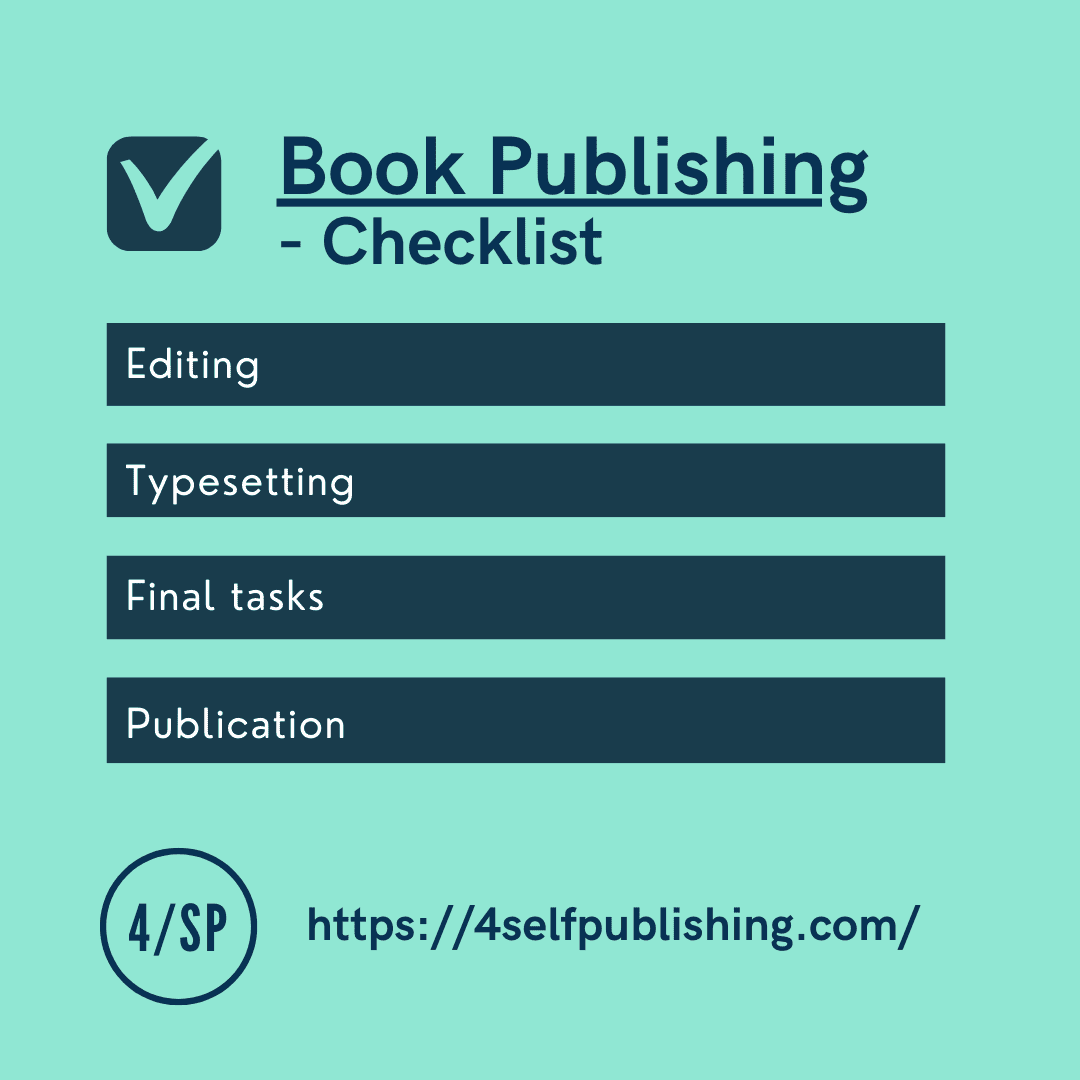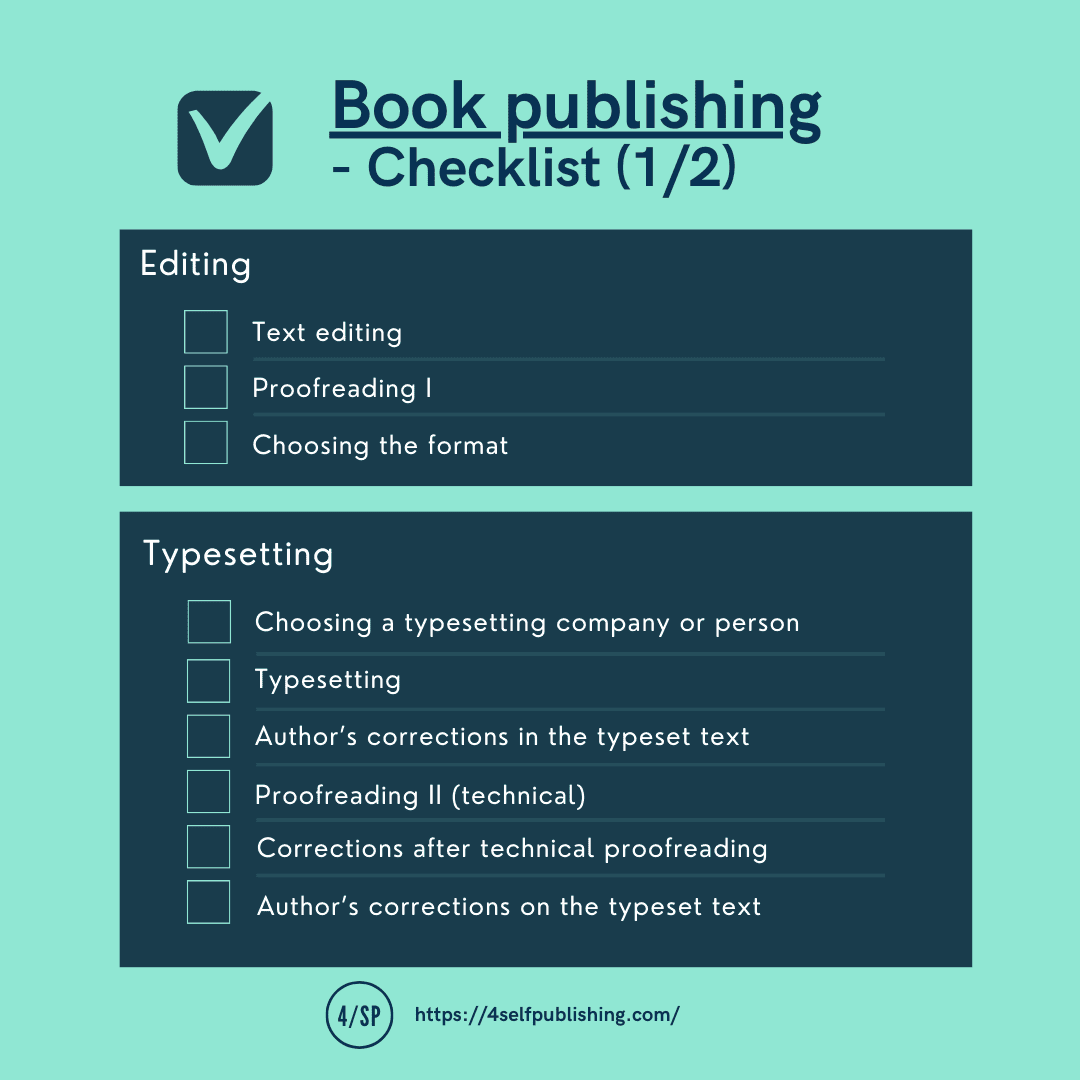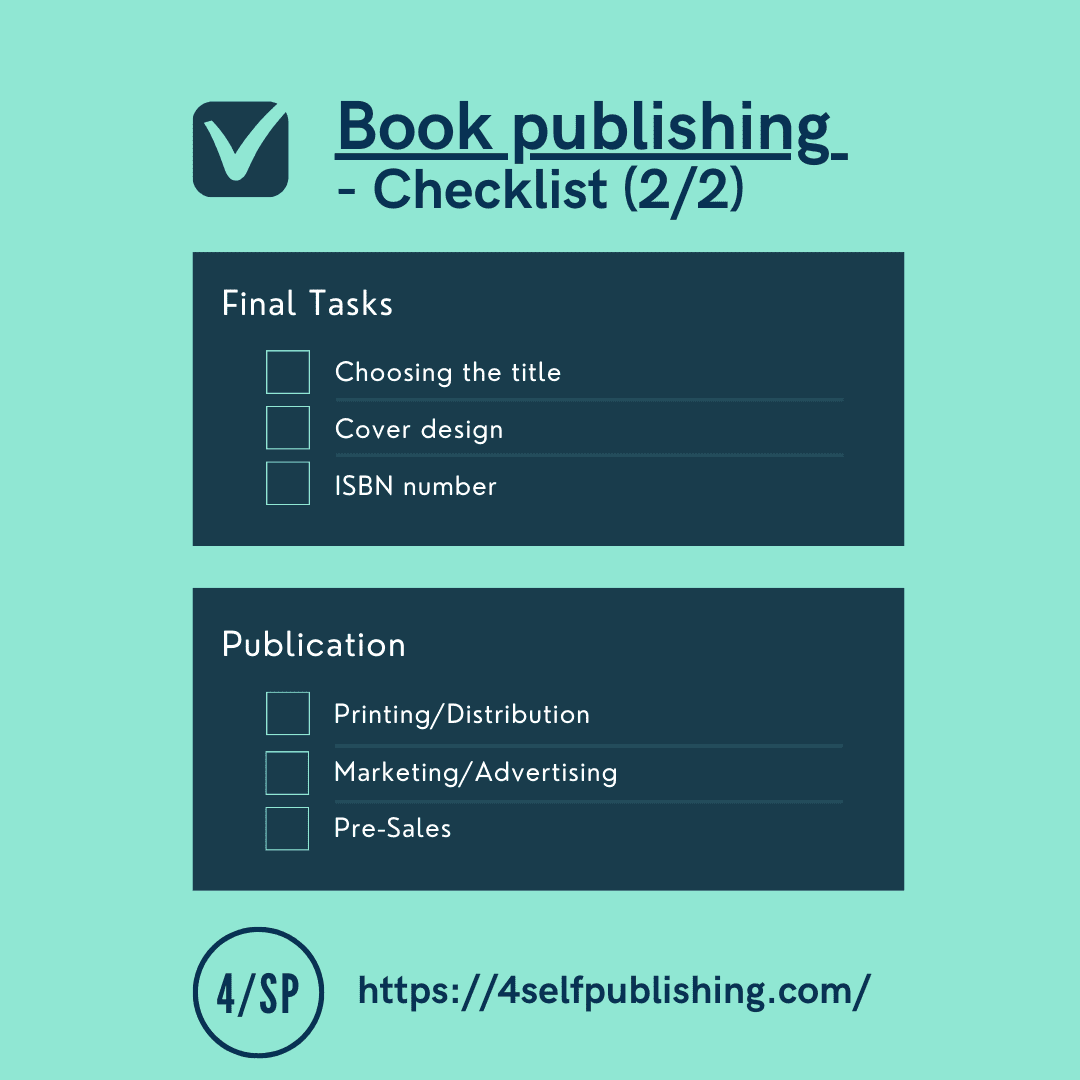Once you have chosen your target audience, made a plan for the book, selected the vocabulary, prepared the graphics, and written the text—in other words, prepared your work—the next step is to publish your book. This seemingly simple action consists of several smaller but equally important steps.
A brief note on finances
Before you proceed, consider whether you have the resources and capabilities to publish the book yourself, or if you will look for a publisher. Regardless of which option you choose, your text will go through the following stages. Ah yes, the costs... If you are interested in the approximate costs of publishing a book or want to check the costs of preparing a book for sale, I encourage you to read this article: How much does it cost to publish a book (self-publishing)? Here, you will also find an approximate cost calculator and learn what factors influence the cost of publishing a book and how to calculate its market price.
What should you keep in mind from the very beginning?
The way your content looks in a text editor does not mean it will look the same when prepared for sale (whether it is an ebook or a printed version). Therefore, don’t worry if something doesn’t turn out right in the text editor, looks crooked, or isn’t graphically perfect. Don’t worry, there will be time to fix it.

1. Editing
Find someone who is an editor. Ideally, this should be someone from the industry in which you want to publish your book, so they have knowledge of what you have written. It will be easier for them to catch factual errors and possibly consult them with you. The editor’s job is to unify your style and initially correct linguistic, stylistic, and factual errors.
2. First proofreading
Before you send the text for typesetting, send it to a proofreader to correct linguistic, stylistic, and punctuation errors, as well as eliminate repetitions, double spaces, etc. Once the proofreader has finished their work, read the text once more yourself to ensure it accurately conveys what you intended.
3. Medium
The choice of medium affects the layout, selection of margins, font, spacing, page layout, and colors. If you want to publish a printed book, you need to consider where your reader will read it. Will they need to lay it flat, or not necessarily? This will determine whether you choose a sewn, glued, or sewn-glued book.
4. Printed Book
If the medium is paper, it is important to choose:
a) Paper:
- color (there are many shades of paper colors);
- weight (i.e., how thick the page will be);
- texture (whether the page will be 'smooth' or 'rough');
b) Cover type:
- hard;
- soft;
- soft with flaps – at the back and front, or only at the back or front.
Why are these issues important at this stage? So that the person doing the typesetting can take them into account in their work. The typesetter must choose the type of font, its size, and color. These things are important now because, for example, different fonts are chosen for preparing an ebook compared to a printed book. If you choose a digital medium, issues related to paper won’t be relevant to you, but you will still need to consider things like margins.

5. Typesetting and layout
Look for a good typesetter or a company specializing in typesetting. This should be a person or company that knows the latest trends, has an innovative approach to work, is creative, and open to your ideas. Additionally, they should consider the choice of medium for your text and adapt it to current fashions.
6. Corrections in typesetting
The number of corrections depends on your agreement with the typesetter or the agreement between the typesetter and the publisher. Therefore, it is important for you to catch as many errors as possible that stand out to you. These might include typos, which can occur when copying text from one program to another. There may also be changes in the order of paragraphs or the placement of photos, graphics, infographics, or charts in the wrong place.
7. Proofreading II (technical)
This proofreading involves removing conjunctions (so-called orphans) from the ends of lines. The proofreader ensures that the text is not obscured by images and that everything is clearly visible. They pay attention to text highlights, spacing between letters in words, and word hyphenation. Automatic hyphenation is not always correct. The proofreader may also catch additional linguistic or syntactic errors.

8. Corrections in typesetting after technical proofreading
When you submit the text for final adjustments after technical proofreading, later check to ensure that the typesetter has incorporated all the corrections.
9. Choosing a title
The best titles are short and reflect the content. However, the book market is already full of them. Currently, for a reader to want to pick up a book, its title must be short, catchy, and easy to remember. If it is intriguing or funny, all the better for you.
10. Cover
Do you have a title? Great! Now it's time to prepare the cover. You can do this yourself or hire a graphic designer. It is important that the cover corresponds with the title and content of the book. Check out the latest releases in bookstores. Pay attention to the technique and fonts used on the covers of those publications. A modern style attracts customers. You can find more about designing a cover in the other article or video.
11. ISBN Number
The final step is obtaining an ISBN number. Yes, every publication, whether a printed book or an ebook, must have its own unique number. When publishing with a publisher, the ISBN number is taken care of by their staff. However, if you are self-publishing, remember this step. To obtain an ISBN number, register as a person starting a publishing business on the website https://www.nielsenisbnstore.com/Home/Barcodes, if you live in USA it’s correct page: https://isbnforbooks.com/cart/. Follow the instructions. The received ISBN number should be placed on the back cover and on the imprint page (also known as the 'colophon'). Remember! Whether you have to pay for obtaining an ISBN number depends on the country in which you want to publish your book.
12. Printing or publishing
If you want to print your book, hire a printing house. If your work is an ebook, then it’s a straightforward path to distributing it in digital libraries or through digital sales. Here, our article about self-publishing platforms might help you.
13. Marketing and advertising
These are topics for separate articles, but remember that nothing sells without marketing or advertising these days. If readers don’t hear about your book, it will reach a narrow audience. How can you promote your idea?
14. Pre-sales
What is it? How does it work? Why is it important? You’ll find answers to these and many other questions in article about presales.
